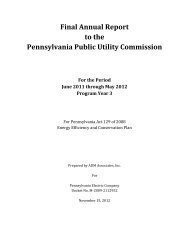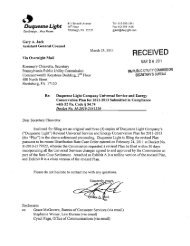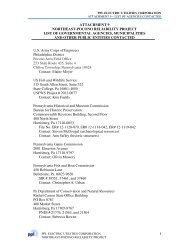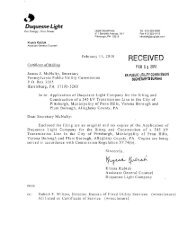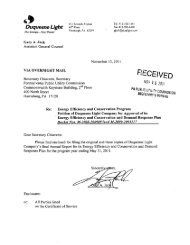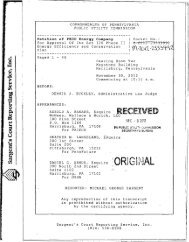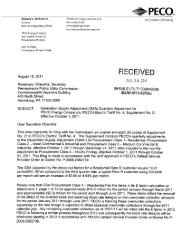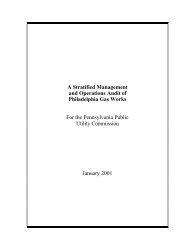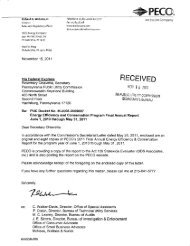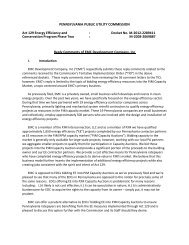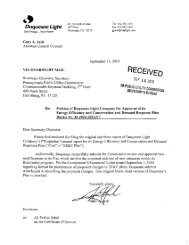Electric Power Outlook - Pennsylvania Public Utility Commission
Electric Power Outlook - Pennsylvania Public Utility Commission
Electric Power Outlook - Pennsylvania Public Utility Commission
You also want an ePaper? Increase the reach of your titles
YUMPU automatically turns print PDFs into web optimized ePapers that Google loves.
the past two years, both peak demand and energy projections have shown significant decreases.<br />
Generally, recession effects account for a deferment of peak demand about four years, meaning<br />
that demand projected for 2008 will not be realized until 2012. Summer peak demand in the<br />
United States is expected to increase from 772 GW in 2010 to 870 GW in 2019, or an annual<br />
growth rate of 1.3 percent. Net Energy for Load is predicted to rise at the rate of 1.6 percent per<br />
year. The 2019 anticipated summer reserve margin is 21.5 percent.<br />
Uncertainty inherent in projections of peak demand must be considered to maintain adequate<br />
reserve margins. The future demand for electricity depends on several interrelated variables:<br />
• Future economic growth,<br />
• Price and availability of other energy sources,<br />
• Technological changes,<br />
• Higher efficiency appliances and equipment,<br />
• Customer-driven conservation efforts,<br />
• Industrial cogeneration, and<br />
• Effectiveness of industry-driven conservation and demand-side management programs.<br />
The recent economic recession attributes to the greater uncertainty in future electricity use,<br />
necessitating continuous updates to demand forecasts. In the United States, there is an estimated<br />
10 percent probability that summer peak demand will increase above 977 MW in 2019.<br />
In a recent report 60 , NERC states that while the electric industry is capable of responding to<br />
demand growth over the long-term, a potential rapid growth in the short-term could place it in a<br />
position where adequate resources cannot be fully deployed in a manner to meet adequacy<br />
requirements. For RFC, the NERC Scenario Case would advance the need for additional<br />
resources by three years to 2014. For the PJM portion of RFC, under the scenario, reserves<br />
would drop below the NERC reference level by 2015, decreasing to 13 percent by 2017. The<br />
report points out, however, that the entire PJM RTO would have adequate reserves through 2016.<br />
NERC states that the existing transmission system and planned additions “appear generally<br />
adequate to reliably meet customer electricity requirements.” The continued reliability of the<br />
bulk power system depends on the ability to site and permit new facilities in a timely manner.<br />
About 39,000 circuit miles of new high-voltage transmission are projected for the next 10 years.<br />
Nearly 6,500 miles of transmission are currently considered delayed for up to three years.<br />
60 NERC, 2010 Special Reliability Scenario Assessment: Potential Reliability Impacts of Swift Demand Growth after a<br />
Long-Term Recession, August 2010.<br />
<strong>Electric</strong> <strong>Power</strong> <strong>Outlook</strong> for <strong>Pennsylvania</strong> 2010-15 49




